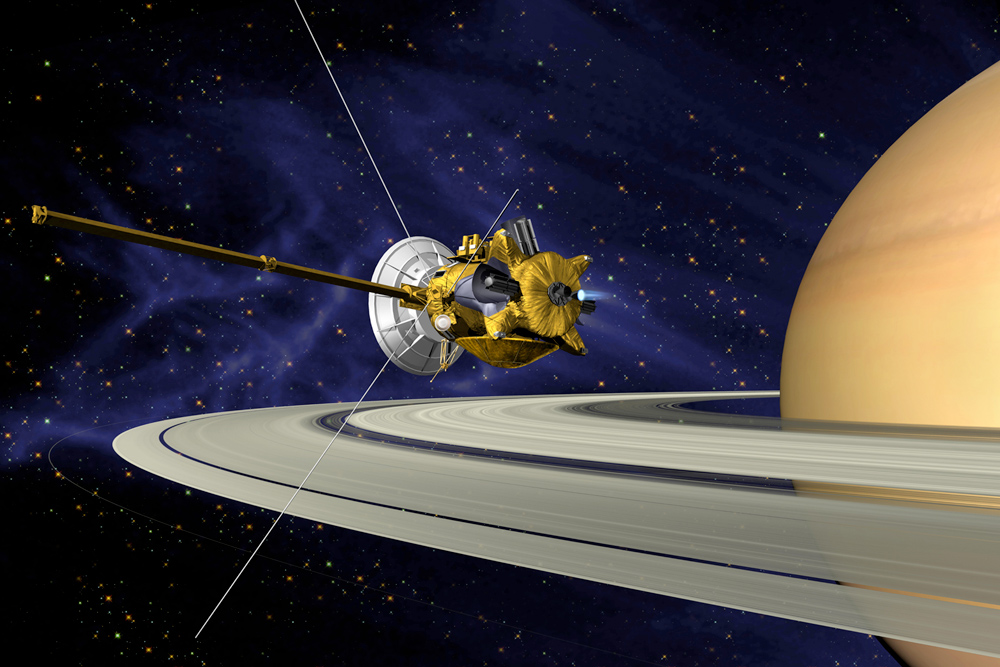Missions
Cassini-Huygens

Cassini: Mission to the Saturn system
- Launched on Oct. 15, 1997
- End of Mission: Sept. 15, 2017
- First spacecraft to orbit Saturn
- Carried the battery-powered Huygens probe
- Both Cassini and Huygens probe were enabled by Radioisotope Heater Units
Powered by:
The Cassini orbiter included 82 strategically placed radioisotope heater units, while Huygens carried 35 of the units. Each RHU produced about 1 watt of thermal power.
Goals: An international endeavor involving 17 nations, Cassini was designed to explore the Saturn system from orbit: the planet and its atmosphere, rings and magnetosphere, and its moons, particularly the large smog-enshrouded moon Titan and the other icy satellites. Cassini carried Europe's Huygens probe to its rendezvous with Titan. Although Huygens used battery power on its descent to Titan, the Cassini RTGs provided power to the probe en route to the Saturn system.
Accomplishments: After successfully completing the first in-depth, up-close study of Saturn and its realm from orbit, Cassini embarked upon two extended missions to follow up on the many discoveries made during its primary 4-year mission. Among the most surprising discoveries were geysers erupting on Enceladus and the dynamic effects of it and other moons on Saturn's rings.
The Huygens probe successfully parachuted to a landing on surface of Titan, achieving the first-ever landing in the outer solar system on Jan. 14, 2005. Cassini's observations of Titan have given scientists a glimpse of what our home planet might have been like before life evolved on Earth.
